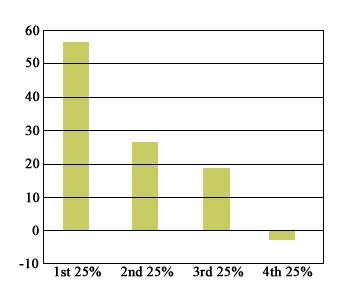There is one well-known person that comes to mind when I think of employee turnover, Jack Welch. He is the proponent of replacing the bottom 10% of an organization every year. For a time, I was also aware of a philosophy exiting in one or more companies in Silicon Valley that required the dismissal of the bottom 5% every quarter. I found both philosophies harsh and difficult to implement when I led marketing organizations. In marketing, many functions only had one or two people responsible for them. The act of cutting one of the two people or cross measuring non-related skills to remove either or 5% per quarter or 10% per annum was almost impossible. Moreover, the cost of replacement, training, and loss of productivity made such cuts impractical. Consequently, marketing did not participate as wholeheartedly as sales, development or other larger organizations. However, now that I run sales, I find that turnover is a necessary and distracting must.
Retention is the goal of any organization and in sales, retention is highly prized. When turnover is very low (less than 5%) in sales, then the expectation is that the performance of the group is good (they are selling). When turnover is very high (greater than 25%) then the performance of management is bad (poor leadership, hiring, training, or other is usually the cause). Therefore, 10-15% seems to be a good range as it infers successful selling and decent sales management. Yet, turnover, even if necessary, can be demoralizing to the survivors.
No organization wants to lose it top performers so proper incentives for then are required. In sales, it is easy to identify your top performers but it is very difficult to gauge the performance of new salespeople. A productivity index chart is recommended.  By looking at the performance in various quartiles, a manger can determine the amount of revenue contribution of the various salespeople by number of sales people per quartile. In this case, the second tier is generating 26% of the revenue. This works very well for established members of your sales force. Identifying non-performers is easy when they have had sufficient time to sell. It is also important to identify what factors may be impeding their ability to sell. At Broadvox, I tend to use a less sophisticated measurement called Blocking and Tackling (BAT) for determining what is affecting either established sales people or new additions to the group from improving their channel sales or direct sales. Simply put, BAT examines whether the person is demonstrating the basics of the position, product knowledge, revenue plan, lead generation and follow up, leadership and coaching of the channel members, abandoning weak or undirected members in favor of more productive members and building strong relationships within the channel. If proper BAT is occurring, a breakthrough will usually occur. If BAT is missing, then success seldom follows.
By looking at the performance in various quartiles, a manger can determine the amount of revenue contribution of the various salespeople by number of sales people per quartile. In this case, the second tier is generating 26% of the revenue. This works very well for established members of your sales force. Identifying non-performers is easy when they have had sufficient time to sell. It is also important to identify what factors may be impeding their ability to sell. At Broadvox, I tend to use a less sophisticated measurement called Blocking and Tackling (BAT) for determining what is affecting either established sales people or new additions to the group from improving their channel sales or direct sales. Simply put, BAT examines whether the person is demonstrating the basics of the position, product knowledge, revenue plan, lead generation and follow up, leadership and coaching of the channel members, abandoning weak or undirected members in favor of more productive members and building strong relationships within the channel. If proper BAT is occurring, a breakthrough will usually occur. If BAT is missing, then success seldom follows.
Some turnover is healthy for the organization but vigilance and careful analysis is required to keep it a positive.
See you on Monday and this time with another new original recipe.










Leave a comment